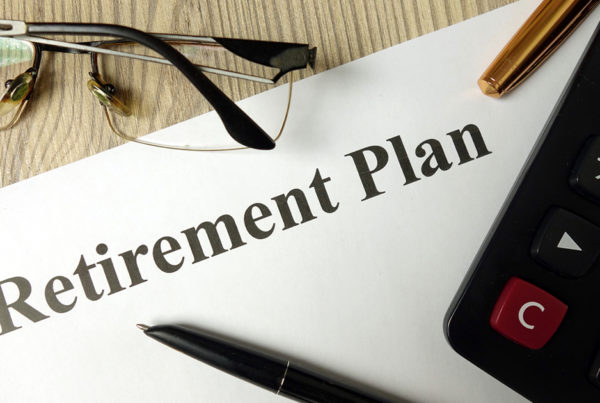Once you reach adulthood and begin earning your own money with that first full-time job, it can be easy to start spending more money than you ever have in the past. The hard part is thinking ahead to your future as a 20-something-year-old and using your newfound freedom and independence to build your future.
Doing a little simple math is all you need to see how investing in your 20s can pay off big time in investment and retirement accounts if you just treat it like any other regimen in your life – with careful planning and commitment. In fact, saving for tomorrow is much like running a marathon: how you finish can be directly correlated to where you start in the pack and how you keep up with mile-markers throughout those 26.1 miles (or in this case, those 45+ year-markers) until retirement.
Investing is a way to maximize your savings over the course of your lifetime.
Remember that investing is not the same as saving for retirement.
Some of your savings will be set aside for retirement in a tax-sheltered account while other investment accounts may be used for other longer-term expenses. The key common criteria is that investments always signify something that’s long-term, not short-term.
Building wealth takes time and commitment, but is well-worth the effort.
Someone earning a salary of $48,000 a year can accumulate a million dollars in a retirement plan by age 65 by investing $15/day (or 11% of their monthly gross income) starting at age 20 ($450/month).* But wait just a few years longer and the amount you need to invest goes up and can easily double before you know it.
So what can you do to get a jumpstart on building wealth today? Here’s what you need to know about investing in your 20s:
1) Keep new debt minimal after graduation from high school or college. Set up a budget as soon as you start living independently and live within your means to ensure you have some left over for the investing part. Get a handle on how much debt you have by calculating your debt-to-income ratio by taking your total monthly debt payments divided by your gross monthly income. Experts recommend keeping a debt-to-income level of 20% or less. For someone making $4,000/month, total debt payments, including car, student debt loans and any other credit card or department store payments, should not be more than $800 to be in a healthy position. Some financial institutions will allow consumers to finance purchases even if debt-to-income ratios are as high as 43% before disqualifying them for future financing, but those levels will not leave room for investing.
2) Build an emergency savings fund of $1,000 first. Once your debt is under control, you should have some money left over to start tucking away. While we’d love to say, “just start investing,” it just isn’t prudent to do this before you’ve built an emergency fund or you will just end up stealing money from your hard-working investment dollars to pay for those new tires or health emergency that might be lurking around the corner. Stealing from your investment fund might not only cost you money via a penalty, but your smaller balance is now earning less interest, too. Once you start investing (or running that marathon), don’t look back over your shoulder. The race has begun; stick to your course.
3) Decide on your long-term investment goal before you begin: To start investing without a goal in mind is the equivalent of starting out on a long road trip without a destination in mind. How much do you want to have at your destination (i.e., retirement) and how much do you need for the trip along the way (other large purchases)? In our prior example ($48,000 salary, saving $450/month), you would retire at age 67 with $1.75 million*, just short of the $1.85 million expected to be needed by that time to live on your retirement savings. While it sounds like a lot of money, remember that once you retire, there’s no more income stream coming into your household. Your “nest egg” needs to be large enough to make scrambled eggs, omelets and quiches for you for many days—and years—after you retire!
4) Decide whether to self-invest or work with a financial advisor. If you want to purchase and manage your own investments, you may want to consider opening an online brokerage account.
Online investment sites provide enough guidance for you to determine how to invest your funds based on your risk tolerance. The younger you are, the more likely you can afford to set your risk tolerance for moderate or aggressive growth in exchange for higher potential yields, meaning the online tool will recommend a stock-heavy strategy. However, if you’re just not comfortable taking on that much risk, you can always set the dial to “conservative” and the online tool will recommend a strategy with a higher blend of bonds to bring your risk—and your return—down. (Investing terms making your head spin? Check out a few common investment terms.)
While there are many options available, we recommend talking with a Verve Wealth Management financial advisor about your investments.
5) Increase the amount you contribute when possible. Frequently review the amount you’ve chosen to contribute and re-run your calculators to ensure you are contributing enough based on future projections. Take advantage of matching retirement plan contributions from your employer and pay raises to increase your monthly investment amount (1% of a 3% pay raise won’t be missed too badly). Try to maintain the same percentage of income in investments versus sticking with a flat amount where possible.
Like many things in life, investing takes hard work and discipline for it to payoff down the road. Using these five tips, you can get a jumpstart on the long race to the finish line—how you finish is up to you and the everyday choices you make as you pass each mile-marker!
Verve’s wealth management team has years of experience helping people just like you make sound investment decisions. Have a question, or need help evaluating your investment portfolio? Get in touch with a wealth advisor who can guide you through a financial checkup, answer your questions and help you create an investment approach that works for your unique situation.
*Assumes 6% interest.






 Federally Insured by NCUA |
Federally Insured by NCUA |  Equal Housing Opportunity |
Equal Housing Opportunity |